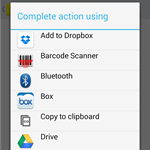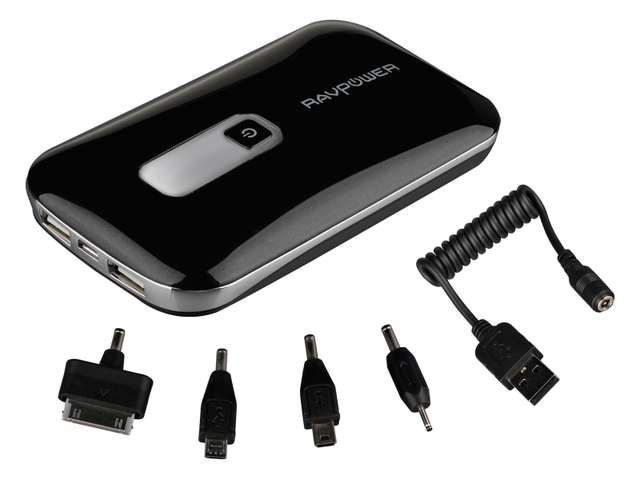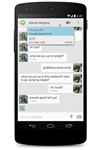
Cody Toombs
Senior Reviewer
Contributing since February, 2013
-
1511articles
-
1389News
-
12Features
-
1Lists
-
7Guides
-
37Reviews
-
65Deals
Page 70
About Cody Toombs
Cody has been writing with Android Police for ten years. While best known for the hundreds of APK Teardowns and breaking news on many of Google’s new products and services, he also covers deeper technical topics about the inner workings of Android, app development, and security. Cody is a software engineer and consultant with two decades of experience developing mobile and enterprise applications. In addition to writing, Cody is a regular podcaster and has made appearances on CNN, All About Android, and Tech News Today. Cody is also an active photographer and videographer, occasional gamer, and an all-around decent human.
What tech products or categories are you most passionate about?
Cameras and smartphones for photography. New technologies are bringing a lot of interesting things capabilities to the worlds of photography and video.
What was your first phone and what do you remember about it?
My true first phone was some old Motorola candybar phone from before the days of smartphones. I started on smartphones with the Cingular 2125 (a rebrand of the HTC Faraday, I think?)
Latest Articles

SMS Vulnerability In Nexus Phones Can Be Exploited To Force A Reboot Or Kill Cellular Connectivity

Today, at the DefCamp Security Conference in Bucharest, Romania, details were revealed about a potentially serious SMS vulnerability found in all current Nexus phones. The person responsible for the discovery is Bogdan Alecu, a system administrator at Levi9 and independent security researcher in Romania. When exploited, the attack can force the phone to reboot or destabilize certain services.

[Bug Watch] Some Nexus 5s Can Suffer From Terrible Audio Quality During Calls And Recordings

We've all heard the story before. A brand new, very popular device rolls out to the public and everybody hurries to get their hands on it. Shortly thereafter, people start to notice some of the more serious issues that degrade the experience or even make the gadget unusable. When that device is a phone and one of those issues is audio quality during calls and recordings, people can become justifiably angry. It seems this is exactly what's happening with quite a few Nexus 5 owners, as audio going into the built-in microphone is plagued by hissing, popping, loud static, and very low volume.

[Bug Watch] KitKat's Share Dialog Can Forget To Give You A Choice Of Apps To Share To, Set Your Last Used App As The Default

One of the greatest features that sets Android apart from most of its mobile counterparts is the highly versatile sharing system that allows apps to declare themselves as targets for different types of media you might want to send from one app to another. All of this is accomplished with the familiar Sharing dialog, also known as the Chooser. Unfortunately, since people began using KitKat, a strange bug has turned up that may randomly cause your last chosen action to be reused automatically instead of allowing you to choose something different each time.

[Bug Watch] Nexus 4 KitKat OTA KRT16S Causing Bizarre Home Button And Quick Settings Issues For Some [Update: Possible Fix]

Since the OTAs for KRT16S started rolling out in the middle of last week, some Nexus 4 owners updating from Jelly Bean are experiencing really troubling behavior after installing the new version. There are reports of issues with core interface functionality like a non-working Home button, Quick Settings toggle, a broken dialer, and various other issues. Not all affected devices have had exactly the same results, and many weren't hit, but some unusual complications have definitely started turning up.

[Bug Watch] Exchange Email Badly Broken For Many Android 4.4 Users, No Single Cause Yet Determined [Update: Fix Coming]

In the haze of excitement over getting the latest and greatest from Android, sometimes we forget that some people actually depend on their phones and tablets for work. Within the professional world, mobile access to email tends to be vital. For better or worse, an overwhelming number of businesses and organizations rely on servers running Microsoft Exchange (or other software implementing the protocol) to handle their email and calendar needs. Unfortunately, a minefield of bugs in KitKat's Exchange support are leaving many stranded without access to their employer's servers.

[Bug Watch] Wireless Chargers Cause Freak Crashing On Android 4.3 With The Latest Google Play Services

Sometimes relatively insignificant software bugs come together in what can only be described as a perfect storm, wreaking havoc and leaving the victims without recourse. Only a few days after the KitKat announcement, complaints of some rather odd behavior on Nexus devices (mostly Nexus 4s) running Android 4.3 started popping up around XDA, the Google Product Forum, and the AOSP Issue Tracker. People were waking up to find alarms failing to go off and most of their apps crashing instantly. A reboot would fix the problem for a while, but it often returned the next day with no explanation. Fortunately, the likely culprit has been found and the bug is pretty easy to avoid.

[Developer Changelog] KRT16O To KRT16S, Critical Bug In Full-Disk Encryption Explains Hotfix

If you've recently updated your Nexus device from Jelly Bean to KitKat, there's a chance you're already being notified of an OTA update to KRT16S. If you're wondering what's changed, the collected list of source commits has been posted by Al Sutton. Most of the tweaks are pretty minor, including an improvement to the backup service, a few updated APNs for assorted carriers, and code to handle rare issues with the 3G Nexus 7 (2012) radio. However, there is one emergency fix for a serious bug that could result in the loss of access to encrypted disks on a device upgrading from 4.3 to 4.4.

[Deal Alert] RAVPower 10,000 mAh Power Bank Available For $25 From Newegg, With Free Shipping

Last time I checked, most phones couldn't make it through a long weekend without a little time tethered to an outlet. If you find your gadget batteries regularly hitting the red, or just simply dying, it might be time to invest in a battery pack. Newegg might have the perfect solution for anybody in need of some extra juice when they're out and about, the RAVPower 10,000mAh Power Bank. It's on sale today for just $24.99 with free shipping.

Chrome 31 For Android Moves To Stable Channel, Includes Support for KitKat Printing, Accelerated Checkout, Security Enhancements, And More

Earlier today, a post on the Chrome Releases blog announced Chrome 31 is moving from beta to the stable. The update is coming in with a number of exciting features, including: printing from Chrome on devices with KitKat, support for requestAutocomplete to auto-fill payment details with online stores, 'Add to home screen' for web apps, and more.

[Bug Watch] Google Now Broken For Some Nexus 5 Users, Problem May Spread To Other Devices

Google Now is pretty amazing, and it just keeps getting better as Google finds new ways to expose knowledge from its massive data repository. It's hard not to become addicted to everything that Now can offer. But what if you just got your hands on Google's latest flagship phone, went through the setup process, and then discovered Google Now doesn't work? Not only have some Nexus 5 owners had this experience, a few of them have even seen Google Now stop working across all of their other devices.

Meet ART, Part 2: Benchmarks - Performance Won't Blow You Away Today, But It Will Get Better

By now you've probably heard about ART and how it will improve the speed and performance of Android, but how does it actually perform today? The new Android Runtime promises to cut out a substantial amount of overhead by losing the baggage imposed by Dalvik, which sounds great, but it's still far from mature and hasn't been seriously optimized yet. I took to running a battery of benchmarks against it to find out if the new runtime could really deliver on these high expectations. ART is definitely showing some promise, but I have to warn you that you probably won't be impressed with the results you'll see here today.

BootUnlocker v1.4 Adds Support For Nexus 5, Lets You Relock And Unlock Bootloader Without Data Wipes (Root Required)

Did you know it's possible to unlock your Nexus 5 bootloader without wiping user data? If your device has already been rooted and relocked for optimal security, then unlocking is just a button tap away thanks to the latest update to BootUnlocker. Support for Google's latest flagship phone was just added with an update to version 1.4 of the app from XDA member segv11. Sadly, both generations of the Nexus 7 from ASUS remain unsupported.

Meet ART, Part 1: The New Super-Fast Android Runtime Google Has Been Working On In Secret For Over 2 Years Debuts In KitKat

It's fair to say that Android went through some chaotic years in the beginning. The pace of development was frantic as the operating system grew at an unprecedented rate. An as-yet undetermined future led to decisions that were made to conform to existing hardware and architectures, the available development tools, and the basic need to ship working code on tight deadlines. Now that the OS has matured, the Android team has been giving more attention to some of the components that haven't aged quite as well. One of the oldest pieces of the Android puzzle is the Dalvik runtime, the software responsible for making most of your apps run. That's why Google's developers have been working for over 2 years on ART, a replacement for Dalvik that promises faster and more efficient execution, better battery life, and a more fluid experience.

RockMyMoto Roots Moto X After Latest Camera Update, Should Work On All Recent Motorola Phones

Some Moto X owners weren't particularly happy to learn that a recent OTA with improvements to the camera also had the undesirable consequence of breaking root acquired through PwnMyMoto. Fortunately, the creator of PwnMyMoto, Justin Case, is back with an updated root method that works on the latest Moto X update and should be compatible with all recent Motorola firmwares.

Merging Of Google Voice And Hangouts Will Result Shutting Down All 3rd-Party Voice Apps In May 2014

Users of Google Voice have long called for the company to pay more attention to the seemingly forgotten service for quite some time. Unfortunately, they may be getting more than they were hoping for. While many people are thrilled to hear Voice will finally support MMS and become a part of Hangouts in early 2014, Google is also planning to close up shop for all 3rd-party apps that relied on the service for free texting and VoIP calling. Sadly, these apps will cease to function on May 15, 2014.

KitKat SMS Situation Revisited: New SMS Rules Ensure There Is One App In Charge Of Your Messaging History, But Everything Else Is OK

You might remember a couple of weeks ago when Google gave developers a heads up about changes to KitKat that might cause problems for SMS apps. At the time, we knew that this only meant there would be a single app in charge of writing to the database, while all of the others would...well, that part wasn't really defined. Today, one in a series of developer videos gave us a little clarification on what it means to be a default app, and what it means for the rest of them.

Google Play Services 4.0 Rolling Out To Gingerbread And Above, Includes New Ads SDK, Updates To Geofencing, Maps, And Wallet APIs

The news out of Google is coming rapid-fire with the Nexus 5 going on sale, KitKat becoming a reality, and now the rollout of Google Play Services 4.0. The updated framework comes with a host of improvements to Google+ Sign-In, Wallet Instant Buy, Location Based Services, Maps, and comes with a brand new Mobile Ads SDK.

[For Developers] Samsung Releases A Batch Of New And Updated SDKs At Developer Conference
Samsung Releases A Batch Of New And Updated SDKs At Developer Conference

When a tech company holds a conference for developers, you can pretty much bet the speakers will have something new to share with the attendees. At the very first Samsung Developer Conference, this pattern continues as 5 new and updated SDKs have been announced for the company's various platforms. This batch of SDKs are centered on Android, Smart TVs, and enterprise development.

As the latest update to Android looms ever closer, we've got our eyes peeled for anything that may hint at what's to come. While most of that information comes to us through leaks or hidden surprises, sometimes it will try to hide in plain sight. Over the last few weeks, an increasing number of code commits have been made to the android-3.10 branch of the kernel/common project. As you might be able to guess from the names, kernel/common is the codebase from which every device kernel is eventually derived. The existence of a 3.10 branch in AOSP is pretty solid evidence to believe we will see a version of Android running on it soon. On top of all of this, there are architecture-specific commits for 3.10 in the kernel/tegra project, which points to development for the 2012 Nexus 7.

In a post on the Android Developers Blog earlier today, Google has given us yet another indicator of upcoming changes to the Android platform. When KitKat launches, it will finally introduce a public API for the last remaining functions texting apps could not achieve without diving into private APIs. Developers are often advised to stay away from private APIs since they can change with each new version and may not be kept consistent across different OEMs.
